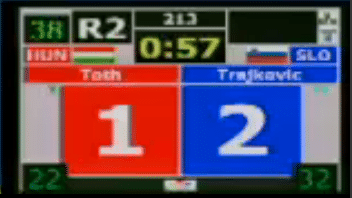ATC
Senior Master
Good luck to you and the kids.I will be at the Canadian open next week. Will give a report!
We just worked out with the Daedo tonight and I really like the updated software. That is another thing I forgot to mention. Many times at tournaments they don't have the updated software or firmware. I know what we had in the dojang was not updated and once he updated the software and the hardware we did not have some of the issue we were having. The system now always connects, before we would lose connectivity to one or more hogus and have to reset things. Before the upgrade we did not get the power reading during the match. Now we see the power numbers for every kick. So if the system is set to score a point at a level or 25 let's say, we now see why a kick did not score, example good hit, nice noise but we now see that the kick was only a 22. So now we see that the hit was not hard enough.
So during your matches just watch the screen and when you see a point or don't see a point look at the number in the lower conners of each player just below the score. You will see a small number, that number is the power or impact output number. If you look to the upper left of the screen you will alse see a number that is the power setting needed to score a point.

